
Treatable Conditions
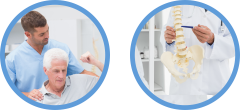
Auto Accidents
Whiplash
Headaches
Neck & Upper Back Pain
Herniated/Bulging/Slipped Disc
Sciatica
Low Back Pain
Neurological Conditions
Pinched Nerve
Scoliosis
Joint Dysfunction
Frozen Shoulder
Shoulder Pain
Tennis/Golfers Elbow
Carpal Tunnel Syndrome (CTS)
Trigger Finger
Hip Pain
Knee Pain
Plantar Fasciitis
Osteoarthritis
Osteoporosis
Fibromyalgia

Auto Accidents
Auto accidents that results from the collision of motor vehicles often result in bodily damage and personal injuries. Acute auto injuries are most times easier to treat than chronic, so seek care as early as possible.
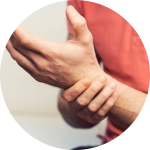
Carpal Tunnel Syndrome (CTS)
A tingling and sometimes aching sensation in the wrists caused by compressed or pinched nerves. People often wake up at night and in the morning with the feeling of their hand still being asleep. CTS has become one of the most widespread occupational health problems we face today. It affects millions of people a year, and with our growing reliance on computers, there seems to be no end in sight.
Carpal tunnel syndrome is caused by pressure on the median nerve just above the wrist. Pressure on this nerve can be caused by an injury or sustained use from common activities like typing, chopping, hammering, or pushing. Symptoms of CTS range from wrist pain, numbness, tingling, burning, weakness or loss of grip strength, and loss of sleep due to discomfort.
There are a number of different ways to treat this painful condition. In most cases, a chiropractic adjustment to the affected area is an extremely effective solution. In some cases, a misalignment in either the back or neck can cause this condition, and chiropractic manipulation of the neck and/or spine can also serve as an effective treatment option. Recently, we’ve found the Cold Laser Therapy has been able to reduce nerve pain in Carpal Tunnel Syndrome sufferers.
These treatments, along with physical therapy, stretching, and strengthening exercises, can in most cases effectively alleviate and eventually eliminate the symptoms associated with CTS.

Fibromyalgia
A disorder of the musculoskeletal system that causes widespread pain and discomfort. Fibromyalgia is a chronic condition that may never go away in your entire life, although on the plus side, it does not cause any damage to your joints, muscles, or internal organs.
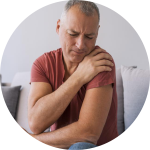
Frozen Shoulder
Stiffness and pain of the joints in the shoulder area; also known as adhesive capsulitis. This is usually a chronic disorder caused by years of manifestation.

Headaches
Headaches are common in our fast-paced, pressure-filled world. There are many causes of headaches, including physical trauma, emotional stress, nutritional deficiencies, or chemical toxins. In addition, if your neck and/or back are out of alignment, this can affect nerves, muscles, and even blood flow to your head. Too often, we turn to over-the-counter medications to relieve our discomfort. Unfortunately, these only mask the underlying sources of pain.
After your initial chiropractic examination, we can determine if chiropractic health care is the best alternative for treating your chronic headaches. A combination of chiropractic adjustments and nutritional and lifestyle changes can dramatically reduce the frequency and intensity of headaches.
It is important to know that if you’ve suffered from chronic headaches for years, improvement can take time. But a visit to our offices is a great place to start. Every headache has a cause, and if we are unable to identify the cause, we will refer you to other specialists who may be able to help if need be.
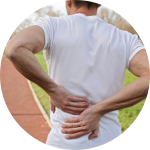
Herniated Disc, Bulging Disc, and Slipped Disc
Discs are the cartilage pads that separate and cushion and help connect the vertebrae that make up your spinal column. They serve as shock absorbers between each of the vertebrae and are constantly subjected to the pull of gravity and the torque from everyday movement.
Disc problems can be the result of genetics, the normal “wear and tear” of aging, and injury. Disc function is greatly affected by the alignment of the spine. A subluxation or structural imbalance can force a disc to bulge, protrude, or herniate, which then can result in contact with the nerves and cause pain.
This common back issue is one we see frequently. We effectively treat this malady by realigning the vertebrae and returning the spine to its normal range of motion, thereby reducing the pressure on the disc’s and spinal joints. We also incorporate physical therapy as well as strengthening exercises for the abdominal and back muscles. Core stabilization is essential for prevention of subsequent disc issues. Not only do we offer Chiropractic care, but now we offer the latest treatment, Spinal Decompression for Herniated Discs.
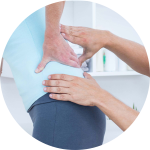
Hip Pain
This is uncomfortable pain within areas of the hip. The hip bone is an innominate object fused by various ligaments and takes on a lot of stress above and below. Dysfunction of the hip commonly causes leg length discrepancies.

Joint Dysfunction
Joint dysfunction is the condition most often treated at our offices, and we are specially trained to treat joint disorders. Joint or articular problems are caused by osteoarthritis (degenerative joint disease), subluxations, sprains, intervertebral disc problems, and various abnormal changes in the curve of the spine. Joints that are aligned improperly or are impaired will begin to degenerate rapidly if not attended to promptly and properly.
Adjustment procedures, physical therapy, and rehabilitation exercises are very effective in treating joint disorders. As with all conditions we treat, we will be happy to refer you to another health-care provider if you are not a candidate for chiropractic.
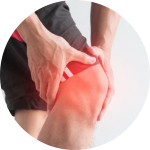
Knee Pain
A common complaint whereby the knee experiences stiffness, swelling, and pain. This pain is commonly caused by dysfunctions at the hip.
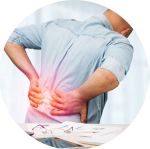
Low Back Pain
This is an uncomfortable pain and irritation of the lower spine. Causes can stem from bone, muscle, and disc involvement.

Neck & Upper Back Pain
Pain is located in the upper back, which also radiates up the neck, causing pain and discomfort. The Problem can be caused by facets, tight musculature and discs.
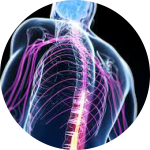
Neurological Conditions
Neurological conditions such as headaches, neuritis (inflammation of any part of a nerve, other than the nerve root), and radiculitis (inflammation of a nerve root as it exits the spine) are the most commonly treated neurological cases in the chiropractic profession. Radiculitis is a common source of shoulder, arm, and hand pain. With neuritis, patients sometimes experience sensations called paresthesia (feelings of tingling, hot spots, cold spots, crawling sensations, stinging, and burning). Loss of equilibrium/vertigo is also a condition sometimes treated by our office.
Because neurological problems can be extremely serious and even life-threatening, these situations often call for an outside referral with other healthcare professionals for co-management.
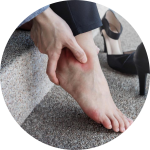
Osteoarthritis
This is the most common form of arthritis, which occurs when the cartilage of the underlying bone degenerates over time. Osteoarthritis is the degeneration of the cartilage and bones of joints caused by “wear-and-tear” processes. It is often associated with degenerative changes in the disc and results in friction between adjacent vertebrae. The friction causes a strain as well as a loss of motion in the facets (gliding joints) of the spine. If these joints are exposed to continued trauma such as strenuous exercise, weakened muscles, and the inevitable factors of aging and heredity, the results can be severe low-back and/or leg pain.
While chiropractic cannot halt the process of osteoarthritis, we can improve the quality of life while living with the disease. If you’re suffering from osteoarthritis, your spine is usually less flexible; therefore, it becomes more vulnerable to injury. Under our care, your treatment may include spinal adjustments, physical therapy, and stretching and strengthening exercises. We can also recommend natural, drug-free ways to control your pain and discomfort.
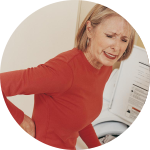
Osteoporosis
A more serious disease occurs when bone density decreases and bones become more fragile and porous. The elderly are the population given more risk assessment due to the risk of fall fractures.

Pinched Nerve
The compression of nerves causes tingling, numbness, pain, and weakness. This compression is usually caused when joints are misaligned or stuck with not much movement.
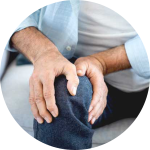
Plantar Fasciitis
The inflammation of the plantar fascia causes heel pain. This is more common in runners due to overuse.
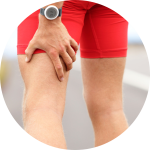
Sciatica
This is an irritation of the sciatic nerve which can cause shooting pain that radiates along the sciatic nerve affecting the lower back, buttocks, and legs.

Scoliosis
A condition that causes the lateral curvature of the spine. Orthopedic examination reveals this, so does X-rays and other imaging devices.
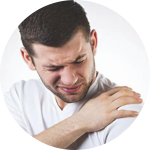
Shoulder Pain
Evidenced by pain or tightness from the surrounding muscles and tendons of the shoulder and rotator cuffs.
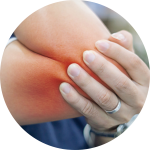
Tennis/Golfers Elbow
A condition where the muscles and joints in your elbow are overstrained, causing irritation and soreness. Pain and discomfort can stem from falling or overuse.
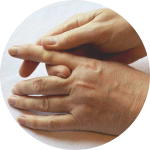
Trigger Finger
Pain, stiffness and discomforts within the digit(s) of the hand. This condition is most commonly seen in the 3rd finger of the hand, although it can affect any of the digits.
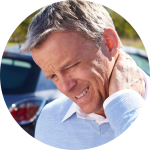
Whiplash
A neck injury caused by a powerful impact, most commonly suffered from motor vehicle accidents. Whiplash is the common name given to the injury where there is a hyperextension (increased backward motion) and hyperflexion (increased forward motion) of the cervical (neck) spine. More simply put, the head is dramatically thrust forward and backward. Car accidents and falls can cause whiplash injuries.
Symptoms of whiplash include headaches; visual disturbance; stiffness of the neck; restriction of movement; and shoulder, neck, or arm pain. These symptoms may or may not be felt immediately. It is estimated that most whiplash injuries are not felt for several hours, days, and in some cases even months or years following the accident.
Even if you are not in pain following a whiplash incident, it is important to receive prompt attention to your injury, as the structural balance of your neck and spine is important to your health. We can assist in your recovery by correctly adjusting your neck and/or spine so it has the chance to heal properly. In addition, we can recommend physical therapy, stretching and strengthening exercises, and natural anti-inflammatory to put you back on the road to good health.

